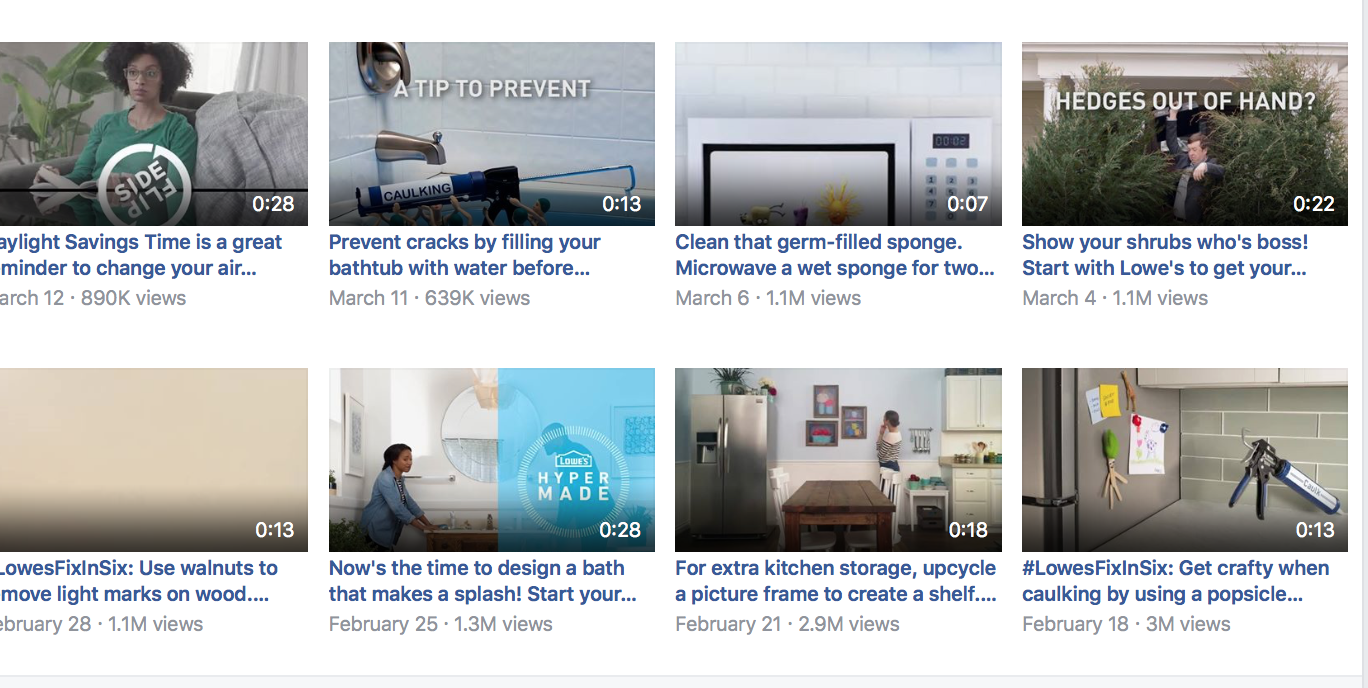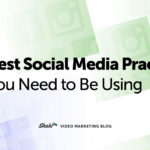Close your eyes for a second, and think about the last social media video that you remember seeing. If you’re like a large majority of daily social media users, it’s probably a video that you saw within the last few hours.
What was the video?
Was it a tutorial showing you how to make easy chicken parmesan, or a video from a business explaining why they work with certain nonprofits? Or maybe it was an interview with a CEO or thought leader that you look up to.
There are so many different types of social media videos, and realistically, any type of business, brand, or nonprofit could (and should) use all of them. In this post, we’re going to go over 6 different types of social media videos all businesses should be using.
Why You Need Multiple Types of Social Media Videos
Social media videos are one of the most engaging mediums to tell your brand’s story and then share it with thousands of interested users. By using several different types of videos, you can provide value in different ways, engaging different niches of users within your target audience.

Social videos help flesh out your business in the eyes of your customers. This, in turn, helps establish stronger and more concrete relationships. Since videos are the best medium for storytelling and users remember and emotionally respond to stories, it only makes sense that diverse types of videos will help you tell your story in different ways.
1. Tutorial Videos
Tutorials are immensely value to your followers, and they can be particularly beneficial to you if you’re able to feature or mention your product somehow within it. Tutorials provide actionable, informational value to viewers, which is why I have something like 26 different tutorials saved from my Facebook feed right now. Yes, a lot of them include food, but there’s also videos on everything from “how to use Facebook’s power editor” to “how to execute a perfect round kick.
I’ve saved more tutorials than any other type of social video. Why? Because they give me information that I not only want to use now, but refer back to later. These videos are a resource of knowledge that I intended to refer back to. Who wouldn’t want that for their brand?
To create a high-performing social media tutorial video, make sure you break down each part of the tutorial into distinct steps. You can even use text clues to announce these section separations, and provide extra snippets of information.
2. Interviews and Q&As
Social media videos containing interviews typically take two forms. The first is where there are two people on screen, with one being the interviewer and the other being the interviewee. In this case, either person (or both!) can be members of your business; you could also interview other industry experts, influencers, or your customers. In the second type of interview videos, we often see one person talking directly to the camera and telling their story.
Interviews can also shift into Q&As, where the interviewee is answering questions submitted by audience members.
Because interviews are all about an individual, they provide that valuable human connection. Users will have a face to associate with the story you’re telling about your brand. While we may love someone’s customer service or their products, we get emotionally attached to other people. This can build loyalty and trust, and—in the case of thought leadership interviews—respect for your expertise.
You can record videos ahead of time and edit them with video editing software, or host them live with tools like Facebook Live or Instagram Live Stories.
3. Promotional Videos
While you want most of your content to be about engagement and relationship building, a few promotional videos added into the mix can benefit your business. Promotional videos can showcase your products and services. While they shouldn’t be created to be a duplicate of a heavy-handed TV commercial, you can make it clear that the video is all about that product.
Here’s a video made with Shakr by Tawanna B. Smith, promoting her live video webinar, with a promotional video. Talk about meta!
These promotional videos should be kept short; at maximum they can be a 90 seconds, but they’re often most effective when kept to 30 seconds or less. You should still make this content fun, whether that’s adding in creative editing or a great song in the background. Apple does a fantastic job of this in the example above.
4. Announcements Videos
Have big announcements for your audience? Your audience wants to hear it—especially in video form. Video is a great medium to use for making announcements because you can accurately convey your excitement in them.
Announcement videos should be kept short and sweet, but they should include:
- An introduction to the announcement
- A brief explanation of what this means for your audience
- When the change/update will be happening
- Where your audience can go for more information
Whether you’re introducing a new hire, sharing information about a new office, or announcing new features on your software, announcement videos can be exciting. They can also give users a behind-the-scenes, first-look exclusive feeling and let them join in on the excitement.
5. Customer-Centric Videos
Creating videos centering and involving your customers can help to nurture your relationship with all your customers. The customers who are featured in your video will feel special, and are likely to share the content on their wall. Other viewers will see that you value your customers, and appreciate you more. This can also help you create an online community around your brand, which is always a good thing.
Always create these videos only with the users’ knowledge and permission. Tag them in the video when you share it on social media, and compliment them and/or thank them in the post, too.
6. Event Videos
When you host an event, or are part of a community event, you want your audience to know. While using live video to broadcast portions of your event while it’s happening is always a good idea, you can also put together high quality, edited videos showing multiple parts of your event once it’s over.
Videos of your event give you the chance to thank users who showed up, and to create a little FOMO in users who didn’t. You can show the value of your event, and hopefully encourage increased attendance at the next one.
When you’re sharing a video of your event, make sure that the video is clearly labeled so that users know exactly what they’re watching. If it’s happening live, tell them how they can join in, too (if they still can), and always thank the attendees for coming in the video.
Final Thoughts
Diverse types of videos should be used on all social media platforms, including Facebook, Instagram, Twitter, and even Pinterest. Since videos uploaded through the platforms’ native video features are typically prioritized in their newsfeeds (as opposed to YouTube links), save yourself some time and edit your videos with video creation software like Shakr. Add captions to your videos during creation so you don’t have to add them on each individual platform. You’ll thank us later.
What do you think? Which types of video do you love to watch? What videos do you create for your audience? Leave us a comment and let us know what you think!


